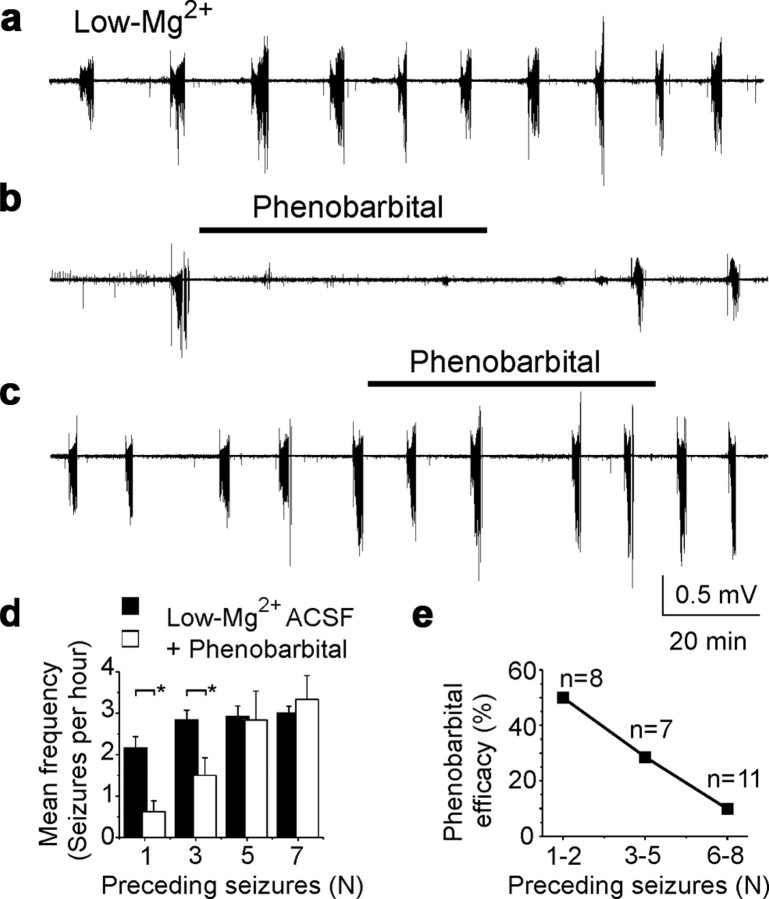Figure 4.
Seizure-dependent changes in the effects of phenobarbital on neonatal seizures. a, Low-Mg2+ ACSF-induced recurrent seizures in the intact hippocampus in vitro. b, Application of phenobarbital (100 μm) in low-Mg2+ ACSF after one ictal-like event (n = 1) abolished seizures in the intact neonatal hippocampus. c, Application of phenobarbital (100 μm) after five ictal-like events (n = 5) failed to abolish recurrent ictal-like activity in low-Mg2+ ACSF. a–c, Extracellular field potential recordings were performed in the CA3 pyramidal cell layer in the intact hippocampus in vitro of neonatal (P5–P6) rats. d, Frequency of recurrent seizures as a function of preceding seizures (n) in control low-Mg2+ ACSF and after application of phenobarbital. Phenobarbital applied after n = 1 and n = 3 seizures significantly reduced the mean frequency of recurrent seizures (*p < 0.05). Phenobarbital applied after more than n = 5 seizures failed to reduce the frequency of recurrent seizures. e, Fraction of hippocampi in low-Mg2+ ACSF in which seizures were abolished by 100 μm phenobarbital, plotted as a function of the number of seizures before phenobarbital application. Efficacy of phenobarbital in neonatal seizures decreased as a function of quantity of previous seizure activity (n).

